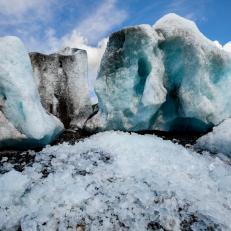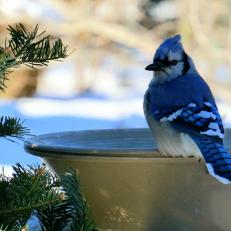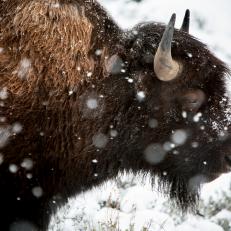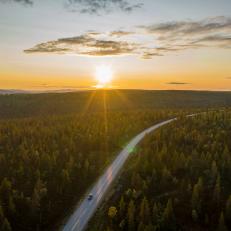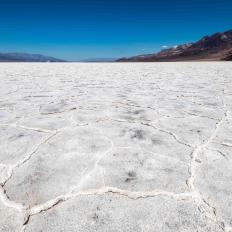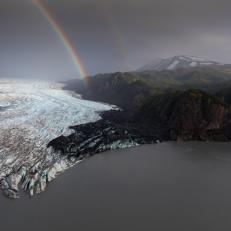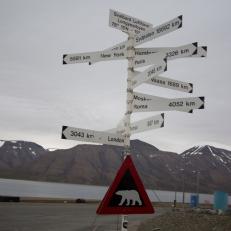Winter in the Desert
When you think winter, deserts don't always come first to mind. But winter in the desert can be just as stunning as frosty winter destinations. Explore these amazing arid spots captured by nature photographer Ian Shive.

Once a large tree that stood tall, this now petrified piece of wood is 225 million years old and are now part of an arid, dry landscape. Photographed in Petrified Forest National Park in Arizona, it looks like only yesterday that this tree fell, splitting in two.
The cholla cactus in Joshua Tree National Park are one of my favorite subjects to photograph, their long arms and silver colored thorns making great compositional subjects. I typically photograph them after the heat of the day passes and the light becomes uniform and soft, allowing the details to pop out.
The Bisti De-Na-Zin Wilderness Area in New Mexico is a rugged wilderness area with unusual rock formations, including these "egg like" structures, which are located in an area aptly named "the egg garden."
Bisti De-Na-Zin Wilderness Area, New Mexico: A rugged wilderness area with unusual rock formations including hoodoos and "egg like" structures in a popular area aptly named "the egg garden."
This long, tubular rock was once a tree, 225 million years ago, before the natural processes of our planet petrified it into stone, like a glance from medusa. Photographed in Petrified Forest National Park, Arizona.
The desert is a great place to photograph in winter. It's not only cooler, but the shorter days make it easier to photograph the magic light of both morning and evening, without having to skip dinner. This national monument, which is managed by the National Park Service, is an incredible destination for photographers, with giant cactus and its namesake organ pipe cactus, providing for never-ending compositions.
The desert is a great place to photograph in winter. It's not only cooler, but the shorter days make it easier to photograph the magic light of both morning and evening, without having to skip dinner. This national monument, which is managed by the National Park Service, is an incredible destination for photographers, with giant cactus and its namesake organ pipe cactus, providing for never-ending compositions.
There is perhaps no better place to celebrate the winter solstice, the longest day of the year, than in Chaco Canyon National Historical Park in New Mexico. The ancient structures of the ancestral pueblo people are hauntingly beautiful. It is widely thought these early peoples aligned these structures specially around the winter and summer solstices.
Fajada Butte in Chaco Culture National Historical Park, New Mexico, is one of the largest, natural features in this otherwise flat, desert area. The dusting of the first snow of the year and evening light create a magical composition of a winter desert landscape.
Deep snow blankets the desert forests of along the Chumasa Trail in Hyde Memorial State Park, Santa Fe, New Mexico.
Death Valley National Park, California: "Moving" rocks of the famous Racetrack. Science hasn't 100% identified exactly how they move but wind, rain and ice are all considered possible factors.
Snow and ice create patterns on these giant sand dunes that almost resemble the markings of a giraffe. Photographed in Great Sand Dunes National Park and Preserve, Colorado.
Three Rivers Petroglyph Site, New Mexico: One of the few places in the desert southwest set aside solely for its rock art and one of the few places to give visitors direct access. Over 23,000 glyphs have been documented here. It is managed by the Bureau of Land Management (BLM). Dated between 900 and 1400 A.D. Jornada Mogollon peoples.
The annual arrival of migratory birds in Bosque del Apache National Wildlife Refuge, New Mexico, including sandhill cranes and snow geese, is a sign that winter is descending upon the United States.









